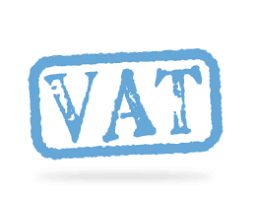VAT Registration in the UK: A Practical Guide for Business Owners
When you’re running a business in the UK, sooner or later someone will bring up VAT. For many new business owners it’s one of those topics that seems complicated until you break it down. At TAXREADS LTD, we often meet clients who only realise they should have been VAT registered months after crossing the threshold — and by then HMRC is already asking questions.
The aim of this guide is to make VAT registration clear, with examples of when it applies, when you might want to register voluntarily, and what pitfalls to avoid.

When Do You Need to Register for VAT?
The law is straightforward: if your turnover exceeds £90,000 in any rolling 12-month period, you must register. It’s not tied to the tax year or your accounts year — HMRC looks at the last 12 months, month by month.
For example:
- A small café in London makes steady sales, around £8,000 each month. By the time they finish their 12th month, total sales have crossed £96,000. Even though each individual month wasn’t huge, the rolling total has triggered VAT registration.
- A construction contractor wins a single project worth £100,000. They cross the limit immediately and must register as soon as they accept that contract, not wait until the year is over.
Another important point: if you expect to exceed £90,000 in the next 30 days alone (say you’ve just signed a big deal), you must register straight away.
What If You Don’t Register on Time?
Late registration can be costly. HMRC will backdate VAT to the date you should have been registered. That means you may end up paying VAT out of your own pocket, because you didn’t charge it to customers. Penalties and interest can also apply.
We saw this recently with a design agency in Manchester. They crossed the limit in March but only noticed in August. HMRC required them to pay VAT from March onwards. Since most of their clients were individuals, they couldn’t go back and ask for the VAT. It came out of their profits.
Voluntary VAT Registration – When It Makes Sense
Some businesses choose to register before they hit the threshold. This isn’t compulsory, but it can sometimes save money.
For example:
- A small IT consultancy with mostly corporate clients may benefit, because their clients can reclaim VAT. Registering early means the consultancy can also reclaim VAT on equipment, software, and travel.
- On the other hand, a wedding photographer whose clients are individuals may find voluntary registration unhelpful. Couples can’t reclaim VAT, so adding 20% to the invoice could price them out of the market.
So the decision depends on your customers. If they’re VAT registered, it rarely hurts to register early. If not, it can reduce your competitiveness.
How to Register
Most businesses register online through HMRC’s website. It takes around 2–4 weeks to receive your VAT number, though delays do happen. You’ll then need to:
- Add VAT to invoices.
- File VAT returns (usually every quarter).
- Keep digital records under Making Tax Digital rules.
Here’s a common misunderstanding: some owners think VAT is extra money for them. It isn’t. You’re collecting tax on behalf of HMRC, and you must pay it over. The only benefit is reclaiming VAT on business expenses.
Common Mistakes to Avoid
Over the years at TAXREADS LTD, we’ve noticed patterns in the mistakes small businesses make:
- Missing the rolling 12-month rule
A bakery was tracking turnover April to April, like their accounts. They thought they were safe. But HMRC looks at any 12 months, not your financial year. They were already liable three months before they realised. - Incorrect VAT claims
A marketing agency tried to reclaim VAT on entertaining clients in restaurants. That’s blocked by HMRC rules. They ended up repaying it. - Forgetting to update invoices
One consultancy carried on issuing invoices without VAT even after getting registered. Six months later, HMRC spotted it, and they had to pay the VAT themselves. - No digital records
Since Making Tax Digital came in, you must keep VAT records digitally and file using compatible software (e.g. Xero, QuickBooks, or FreeAgent). Paper records or spreadsheets alone aren’t acceptable.
A Few Practical Scenarios
To give you a flavour of how VAT works in practice, here are some real-world styled examples:
- The restaurant owner – turnover was £60,000 in year one, £80,000 in year two, then shot up to £95,000 in year three. They missed the registration point because they assumed it was “per year”. By the time HMRC contacted them, they had to pay VAT for the past nine months.
- The online retailer – selling on Amazon, turnover crossed £90,000 within six months. They registered promptly and avoided penalties. But they hadn’t realised some of their products qualified for the reduced 5% rate, not 20%. Sorting this out required specialist advice.
- The consultant with voluntary registration – a business coach registered at £40,000 turnover because all her clients were VAT registered companies. She reclaimed VAT on hotel stays, software, and office rent, which saved her thousands.
These examples show why VAT isn’t just about ticking a box; it affects pricing, cash flow, and profitability.
Final Thoughts
VAT is one of those areas that can either run smoothly or cause huge stress depending on how you manage it. Registering at the right time, keeping records properly, and understanding the rules for your industry makes all the difference.
At TAXREADS LTD, our chartered accountants help business owners every day with VAT registration, returns, and compliance. We combine our background from Ernst & Young with practical experience of UK small and medium businesses.
If you’d like tailored advice, or you’re unsure whether you should register now or wait, you can book a consultation with us at [email protected]
